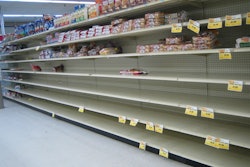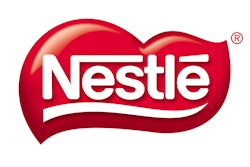
Mention an e-commerce company, and most people immediately think of giants like Amazon or eBay. Food and beverage companies don’t come to mind quickly, and that’s not a surprise: The move to e-commerce for food and beverage retailers has been slower than other industries. In fact, online grocery sales are only about one percent of the $631 billion U.S. grocery market, making this category one of the lowest penetrating, according to the global agency Fitch Ratings. What’s more, "The Online Grocery Shopper 2013" report by the Hartman Group agrees that although the e-commerce grocery business sounds good in theory, "in reality [it] has yet to yield a profitable mass-market business model."
But slower growth has not stopped retailers from experimentation. Once dominated by niche e-commerce retailers like specialty chocolates or wine clubs, now some of the biggest names in the traditional brick-and-mortar business, like Wal-Mart, are giving e-commerce more serious attention. However, I see two looming questions that will have to be answered in order for a food and beverage company of any size to succeed in this space:
1) How can a company ensure an easy and trustworthy experience for the customer at a price point that makes sense?
2) What supply chain technologies and strategies will make an e-commerce venture profitable?
The customer experience question may be the most difficult to answer, as consumers’ demand change: In the early days of grocery e-commerce, freshness was the reason that many hesitated to buy online: They couldn’t feel the merchandise, smell it or see it, which was key to the shopping experience. This hesitation has waned as companies reliably deliver quality goods, and has become overshadowed by the common stumbling block that any e-commerce company faces: the dreaded delivery fee. Many retailers are overcoming this with free delivery with a minimum purchase or other incentives to make it more palatable to consumers.
I believe we’ll see some real innovation around more robust e-commerce supply chains. For example, brick-and-mortar food and beverage retailers may use their stores as mini distribution centers. This would keep costs low and decrease shipping times to local consumers. For example, if an order came in after the warehouse closed, the order could be routed to a store where a worker would pick the item off the shelf and ship it out. I also expect to see co-op relationships, wherein manufacturers contract with retailers to fulfill the orders by shipping the items to a retail store, or perhaps an exclusively online retailer partners with a brick-and-mortar store to fulfill its orders and meet same-day or next-day delivery expectations.
The questions of consumers’ experience and the ability of the supply chain to deliver profitably will be two of the largest questions that e-commerce food and beverage companies will need to answer. I know that many of the smaller players are watching the big companies closely to learn from their successes and challenges, and because their size and scale will ultimately shape the market. But almost no one is holding back or ignoring e-commerce completely.

















![Top Tech Startup Logo 2025 Vertical [color] (1)](https://img.foodlogistics.com/mindful/acbm/workspaces/default/uploads/2025/07/top-tech-startup-logo-2025-vertical-color-1.pZkBK95TLe.png?ar=16%3A9&auto=format%2Ccompress&bg=fff&fill-color=fff&fit=fill&h=135&q=70&w=240)


